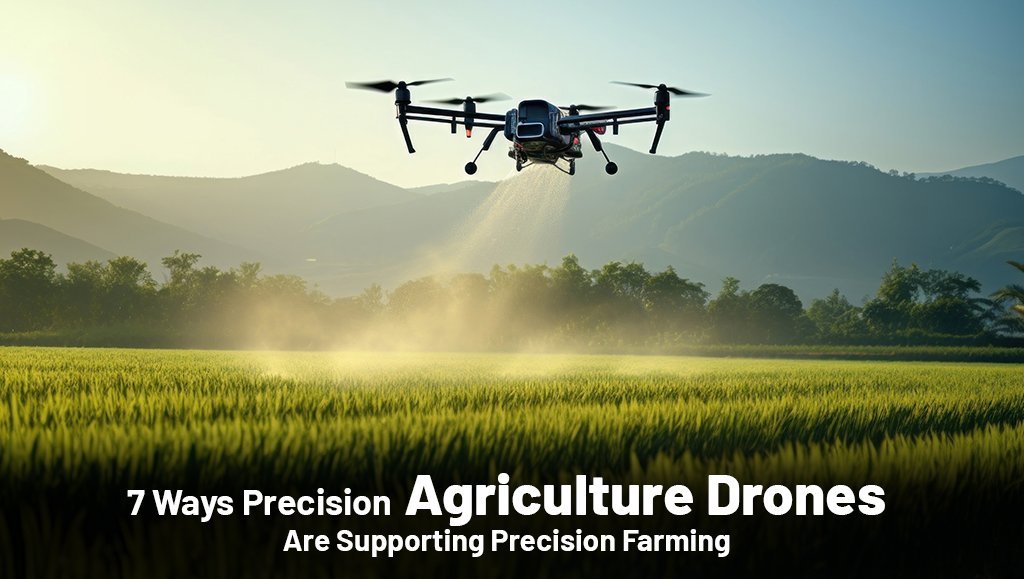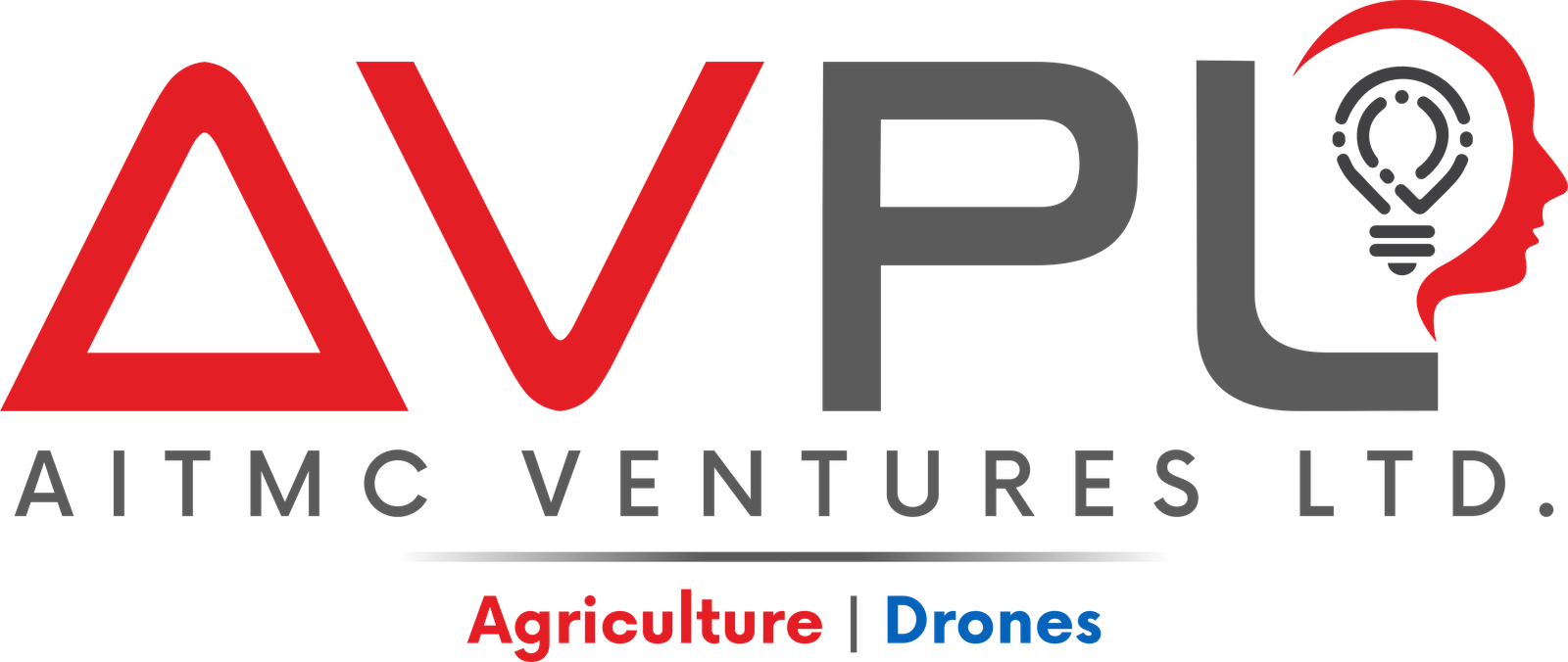
7 Ways Precision Agriculture Drones Are Supporting Precision Farming
Technology is still essential to improve farming methods in the dynamic field of agriculture. The emergence of precision agriculture drones is one of the most revolutionary developments. Modern farming has incorporated these cutting-edge drones to maximize agricultural yields, boost productivity, and cut down on resource waste. Farmers may monitor crops, manage resources, and make data-driven decisions that result in more profitable and sustainable outcomes by utilizing drones in agriculture. Discover the seven ways that precision farming is being aided by agricultural drones.
1. Enhanced Crop Monitoring with Precision Agriculture Drones
Crop monitoring is one of the primary uses for precision agriculture drones. Drones with sensors and
high-resolution cameras are able to take precise pictures of fields. These photos, which are
frequently in thermal and multispectral forms, offer important information on the health of crops.
Farmers can use this information to identify problems early on, including illnesses, pest
infestations, water stress, and nutrient deficits. Crop monitoring from above enables accurate
problem area detection and prompt intervention.
Precision agriculture drones speed up and improve crop monitoring by monitoring vast regions in a
fraction of the time it would take to traverse the fields. By guaranteeing that every area of the
field gets the proper care, this real-time data collection enhances the advantages of precision
farming.
2.Targeted Pest and Disease Management
The ability to detect pests and diseases early is crucial to protecting crops. Precision agriculture
drones are equipped with sensors that can identify subtle changes in plant health, such as color
shifts or spots indicative of pests or disease. These drones use infrared and multispectral imaging
to detect these anomalies, often before they are visible to the naked eye.
By identifying pest outbreaks or disease hotspots early, farmers can apply targeted treatments to
the affected areas instead of spraying pesticides over the entire field. This targeted approach not
only reduces chemical usage but also minimises the environmental impact, contributing to sustainable
farming practices and highlighting one of the core precision farming benefits.
3. Efficient Irrigation Management
Water management is another area where agricultural drone technology excels. With precision
agriculture drones, farmers can precisely map out areas with uneven water distribution. Using
thermal and multispectral imagery, drones can identify regions that are over-irrigated or
under-irrigated, allowing farmers to adjust their irrigation systems accordingly.
This precise irrigation management ensures that crops receive the right amount of water at the right
time, improving water conservation and reducing unnecessary water usage. As a result, precision
agriculture drones help make farming more sustainable and efficient, aligning with the goals of
smart farming solutions.
4. Optimising Fertiliser Use
Fertiliser application is a critical part of crop management, but overusing fertilizers can lead to
soil degradation and increased production costs. Precision agriculture drones assist in optimising
fertiliser use by providing accurate data on soil health and nutrient levels across different parts
of the field.
Drones can use multispectral and hyperspectral photography to assess the soil's nutrient level and
pinpoint areas that require the most fertilizer. This minimises waste and its impact on the
environment by enabling farmers to apply fertilisers only where necessary. Farmers can increase crop
yields and save money by using this precision technique, which is a major advantage of precision
farming.
5. Yield Prediction and Analysis
One of the hardest things about farming is predicting crop yield. However, farmers can forecast
yields more precisely with the aid of agricultural drone technology. Farmers can evaluate and
project possible yields by employing drones to gather data on crop health, plant density, and growth
patterns.
These yield forecasts assist farmers in making important choices regarding marketing, storage, and
harvesting. Farmers can also allocate resources more effectively if they have a better understanding
of the production they anticipate. Furthermore, precise yield forecasts lower the chance of
overproduction or underproduction and improve overall farm management.
6. Field Mapping and Terrain Analysis
Field mapping and topography analysis are two important applications for precision agriculture
drones. Drones using GPS and sophisticated sensors can create precise, in-depth maps of agricultural
areas. A thorough understanding of the geography, soil composition, and other important factors
affecting crop growth is offered by these maps.
Farmers can make better judgments about crop rotation, planting schedules, and soil management by
knowing the topography of the land. In the end, smart farming technologies like these lower the
expenses and labor required to manage large-scale farming operations by optimizing land usage and
increasing output.
7. Improved Farm Safety
A vital but frequently disregarded component of farming is farm safety. By eliminating the need for
manual work in potentially dangerous situations, precision agriculture drones improve farm safety.
Drones can be used to monitor hard-to-reach or hazardous locations, such fields with heavy machinery
operating, flood-prone areas, or hilly terrain.
Farmers may increase the safety of their activities and avoid mishaps by employing drones to monitor
these areas. Additionally, drones make it possible to evaluate fields remotely, eliminating the need
for employees to physically access dangerous locations. In addition to protecting employees, this
use of agricultural drone technology improves overall operational effectiveness.
The Future of Precision Agriculture Drones
Precision agriculture drones appear to have a very bright future. We may anticipate even more
features and capabilities as drone technology develops further. Drones can now process enormous
volumes of data and offer even more precise insights thanks to the integration of artificial
intelligence (AI) and machine learning into agricultural drone software. Large-scale farm management
will become simpler with the development of autonomous drones, requiring less human involvement.
Furthermore, farmers will be able to oversee their activities in real-time, from any location in the
globe, thanks to the integration of drones with other advanced technologies like cloud computing and
the Internet of Things (IoT). Drones used for precision agriculture will therefore continue to be
crucial in improving agriculture, making it more sustainable, efficient, and profitable.
Conclusion
The use of precision agriculture drones has significantly changed the way farmers approach crop
management. Drones are now essential tools for precision farming, offering anything from enhanced
crop monitoring to targeted pest control and better irrigation. In addition to improving
productivity, these technologies are helping to make farming more economical and sustainable.
More farmers will use agricultural drone technology to improve their operations and increase output
as smart farming solutions become more widely available. Drones' use in agriculture will only
increase in the coming years, resulting in more environmentally friendly and intelligent farming
methods that benefit both farmers and the environment.
